Guided meditation For Stress And Anxiety
We tend to perceive stress as our enemy, even though it can do as much damage as it can do good. The kind of stress that you can benefit from is a short-term event that has the power to motivate you, help you focus your energy, and enhance your performance. Good stress is the one that can make you stop procrastinating and finish your work. However, many people suffer from prolonged episodes of stress that drain them of their energy, make them feel jittery, and unable to do take any action. This kind of stress can lead to damaging distress, anxiety disorders, confusion, poor concentration, and a decrease in productivity. Managing your stress response is therefore crucial for your mental health. How does meditation ease anxiety and stress?
Have you ever heard the phrase “fight-or-flight response”? You probably have. It’s “an automatic psychological reaction to an event that is perceived as stressful or frightening”. What it means is that our bodies simply react in ways that are to prepare us to fight or run from danger. It actually comes in handy when you’re in a really dangerous situation. However, being in a prolonged state of such agitation is known to cause physical damage to every part of the body.
So, if you’re wondering why meditation is helpful when it comes to stress, the answer to this question is that meditation is all about relaxation and therefore affects the body in the opposite ways. Quietening your stress-induced thoughts and bringing your body into a calm state restores your body and mind and prevents any damage from the physical effects of stress.
Mindfulness Meditation
One of the most popular ways of managing feelings of stress and anxiety is through mindfulness meditation. It's actually so good for one's health that it is even used as a relaxation technique for a panic attack or even panic disorder. If you need to slow your thoughts down, lessen negative thoughts, and calm your mind and body, mindfulness meditation is the perfect solution for you. Studies show that those who struggle with anxiety can find relief thanks to the effects of mindfulness meditation. Focusing on the present moment instead of worrying about the past or future and thus practicing mindfulness based stress reduction is particularly beneficial for people who struggle with everyday life, generalized anxiety disorder or just they're just feeling anxious.
If you've never practiced mindfulness meditation, you may find it challenging to start. Sitting in silence seems like a pretty easy thing to do, but if you’re not used to it, you may be surprised by how many thoughts will your brain produce once you want to sit in total silence. The advice that is always given on that matter is to try not to judge those thoughts, instead, be aware of them, observe them.
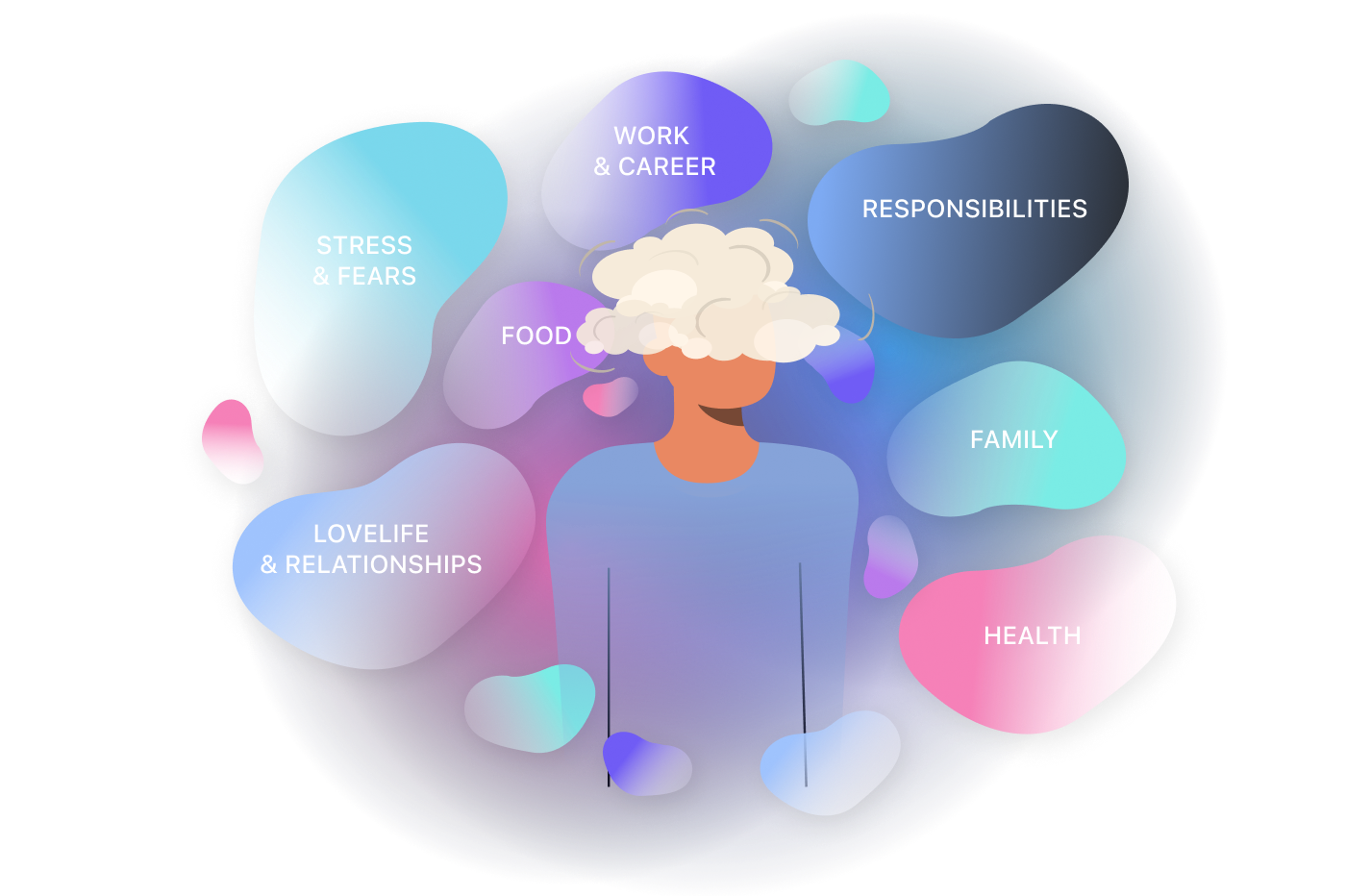
Mediate in a peaceful area. Make sure that nobody and nothing interrupts you, no family, no dogs or cats, no phones. Get rid of your shoes, heavy jewelry, and any restricting clothing. Start slow: practice for a few minutes each time, and only once you get familiar with these sessions and establish a routine, you can start gradually increasing your time.
While practicing mindfulness you should always make sure to:
- Find a comfortable position
- Bring your awareness to the present moment
- Acknowledge your thoughts
- Practice breath awareness
Once you establish a meditation practice, try to experiment with it. Find out what works best for you. For example, you can try different times of day to see how it affects you whether you practice. If you've only ever meditated in the evening, try morning meditation for anxietyand learn what difference does it make for your mind and body.
Music Meditation
Studies show that listening to certain sounds may have a calming effect on your mind, reduce anxiety and stress, and help you relax. Nowadays you can find a lot of music for meditation on the Internet. But how is music meditation different to just listening to the kind of music that relaxes you? Firstly, it’s better if you choose music without lyrics. Lyrics can distract you from meditation. However, it’s also important to choose the kind of music that you enjoy. For example, if you don’t like classical music, listening to it won’t help you. It may instead annoy you. So, find something with a slower tempo, with no lyrics, that you also enjoy listening to.
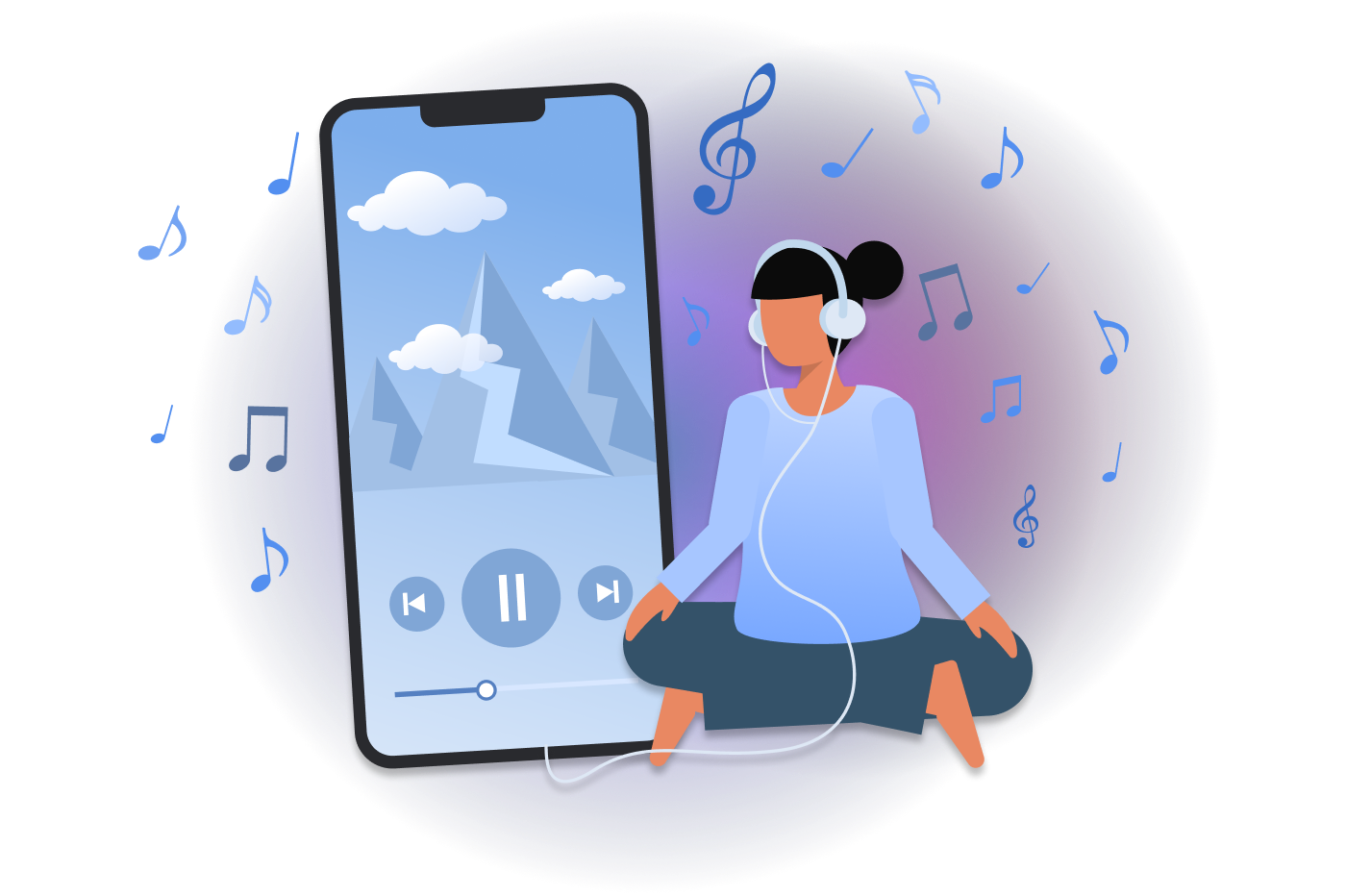
Once you have a piece of appropriate music - it might be a 20-minute playlist or more, but it can also be just one song - get into a comfortable position and relax. Just as with classical music, if you don’t like sitting crossed-legged, don’t choose this position just because it’s often used by others. Get in a position in which you feel comfortable. Once you are sitting in this position, close your eyes, breathe in and out deeply, let the air travel to your belly, relax your muscles, focus on your breathing, and then redirect your attention to the music, to the feelings it evokes in you. Stay mindful of the present moment and take deep breaths. Let the music run through you. Really feel it.
Body Scan Meditation
Normally when you meditate you focus on your breathing. When you practice body scan meditation you pay attention to your body instead, particularly to different parts of your body at the time, on sensations that are happening from head to your toes. Pay attention to the way your skin feels, your scalp, ears, eyelids, your nose. Slowly become aware of every inch of your body but in succession, one part by one. While you’re doing that, you may not feel anything at the beginning, and once you do start feeling your body it can be in a form of both good and bad sensations. Note the good, warm, comfortable sensation, the neutral tingly one, and the bad, painful one, but try not to react to them, don’t label them. And if you notice your mind wandering, return your attention to the body right away.
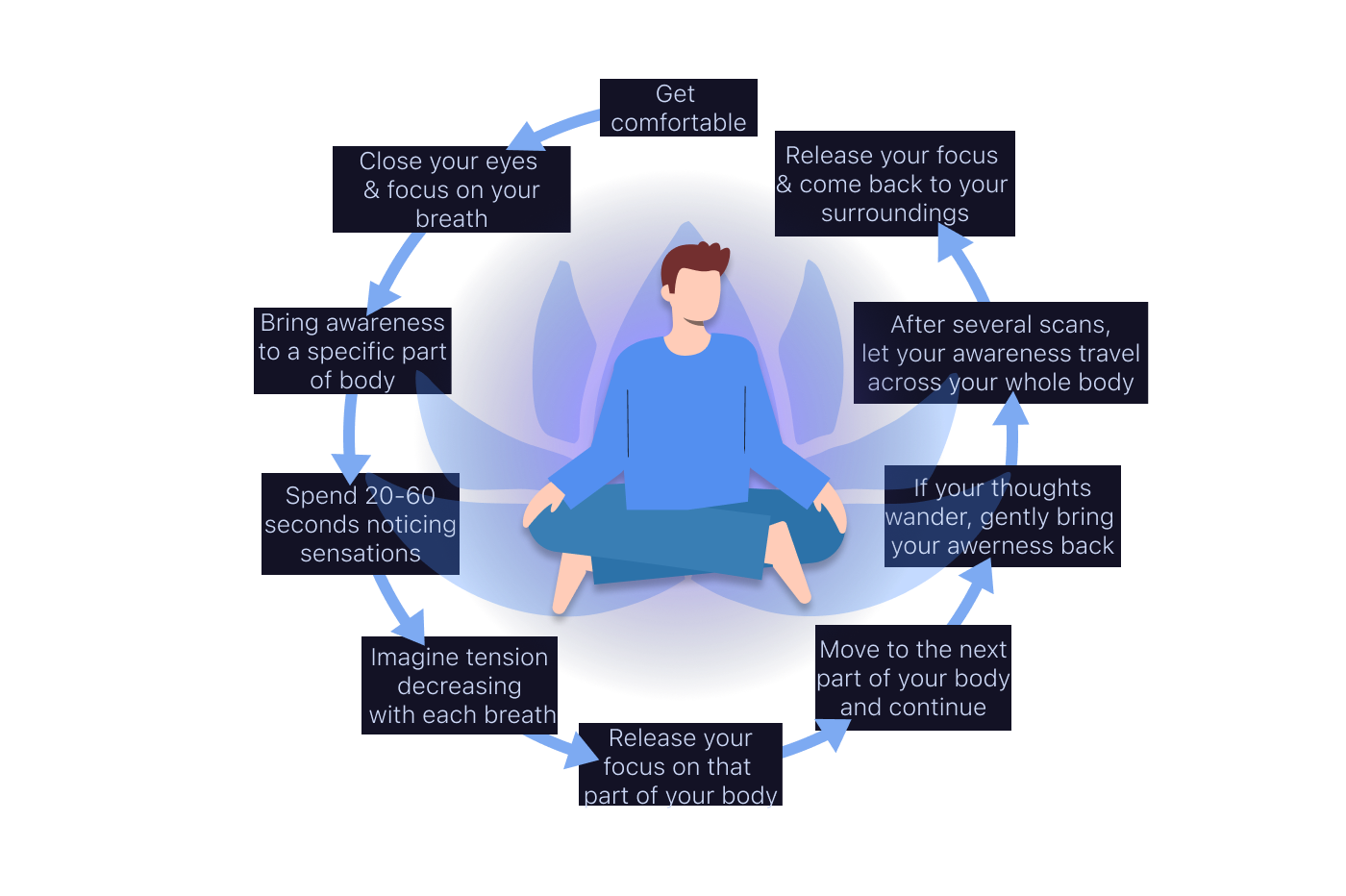
Mantra Meditation
If you find it hard to prevent intrusive thoughts, perhaps mantra meditation is the right pick for you. In Mantra MeditationMantra Meditation you repeat a word or phrase over and over again, which makes it easier to focus. For example, according to a study from 2016 chanting “om” for 10 minutes can help lift your mood, relieve you from stress and even help reduce symptoms of generalized anxiety disorder. If you find it particularly hard to come up with mantras to use, you can always try guided meditation for anxiety and stress.guided meditation for anxiety and stress. Listening to audio and following someone else's instructions might work for you. Perhaps guided meditation will enable you to focus more on what you're doing.
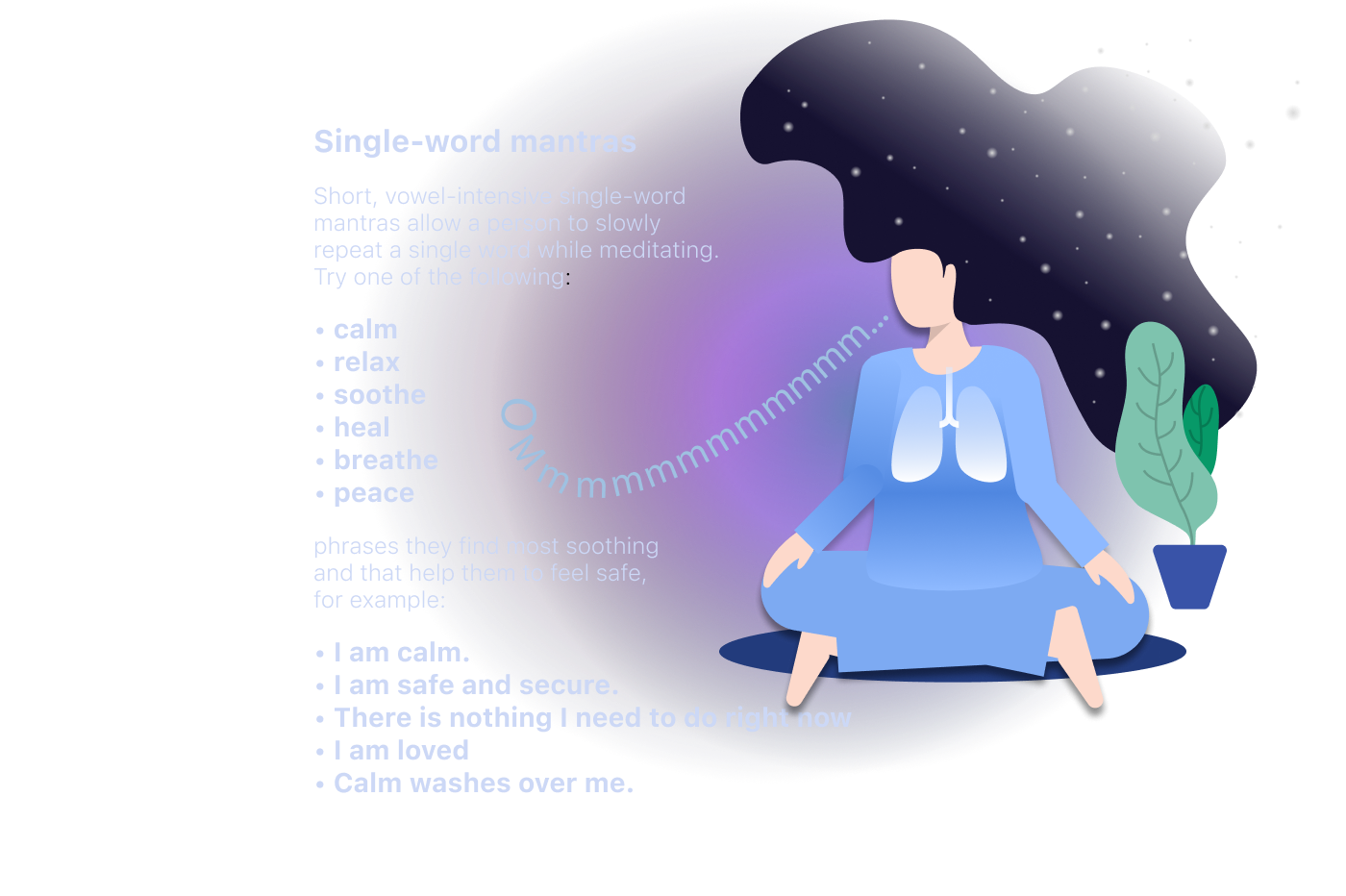
Aromatherapy Meditation
In Aromatherapy, one inhales fragrances from essential oils, which is believed to have a good impact on health and can help balance emotions. You can use them to enhance your meditation experience either by diffusing them into the air or by applying the oils directly to your skin. Inhaling oils can help stimulate your senses, make relaxation easier, help you find clarity and peace. You can make your own research on which essential oils are best to use and why. You may consider using are lavender, chamomile or frankincense, however, there are many more oils that you could try - it all depends on what do you like and want. If you want to apply them on your skin it’s advised to dilate them with a carrier oil such as sweet almond or grapeseed. There are a lot of DIY recipes on the Internet that you might want to use for this.
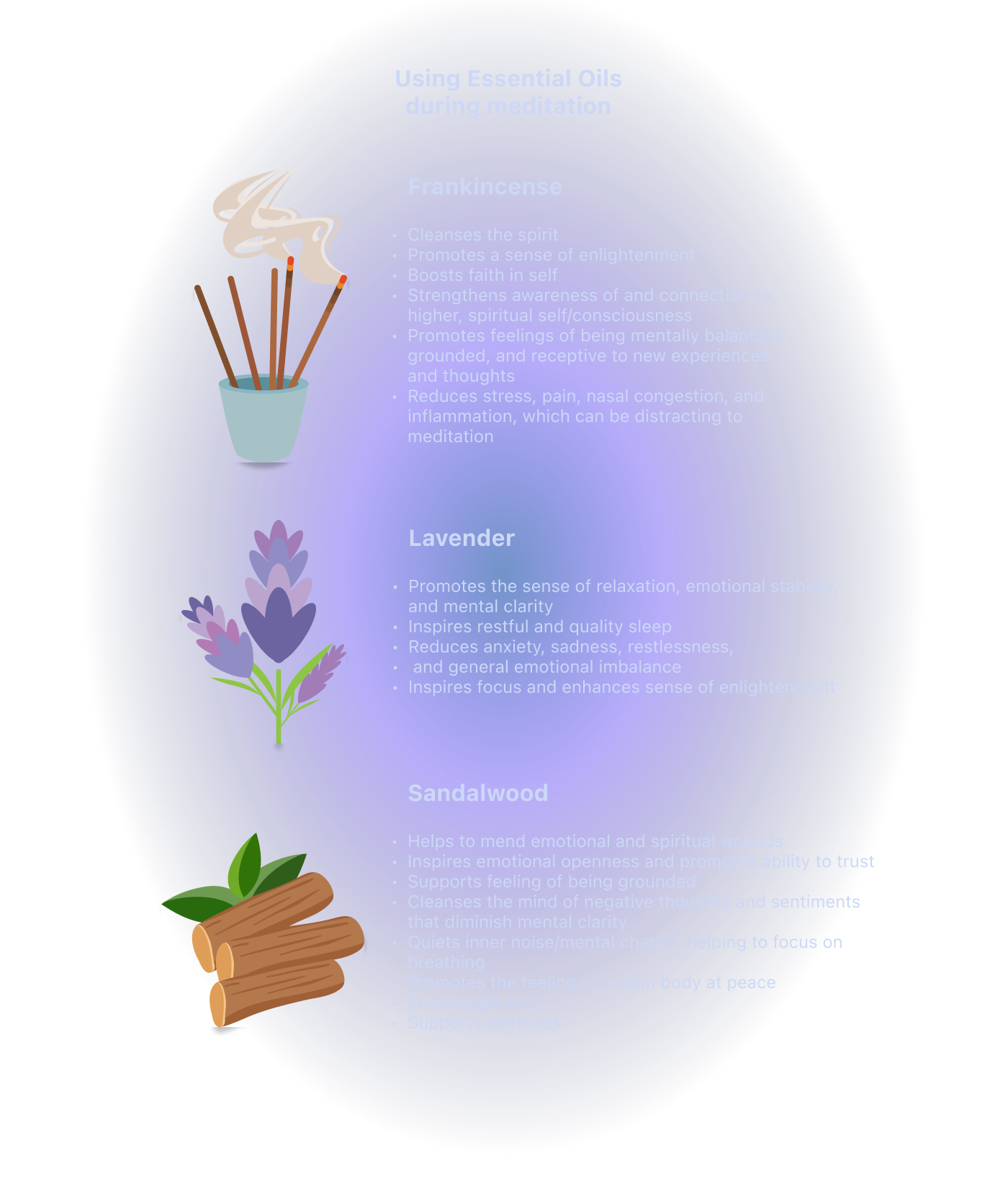
Aromatherapy Meditation requires a bit more preparation than most of the other ways in which you can meditate but we promise - it’s worth it.
Brief Meditation
You may be surprised to find out that even as much as 10 minutes of meditation for anxiety relief or 5 minutes of guided meditation for anxiety practiced daily is enough to get results. According to research, you don't always need to spend half an hour meditating, short meditation but practiced daily is enough to help you clear your mind from intrusive thoughts, improve your mood and reduce stress.
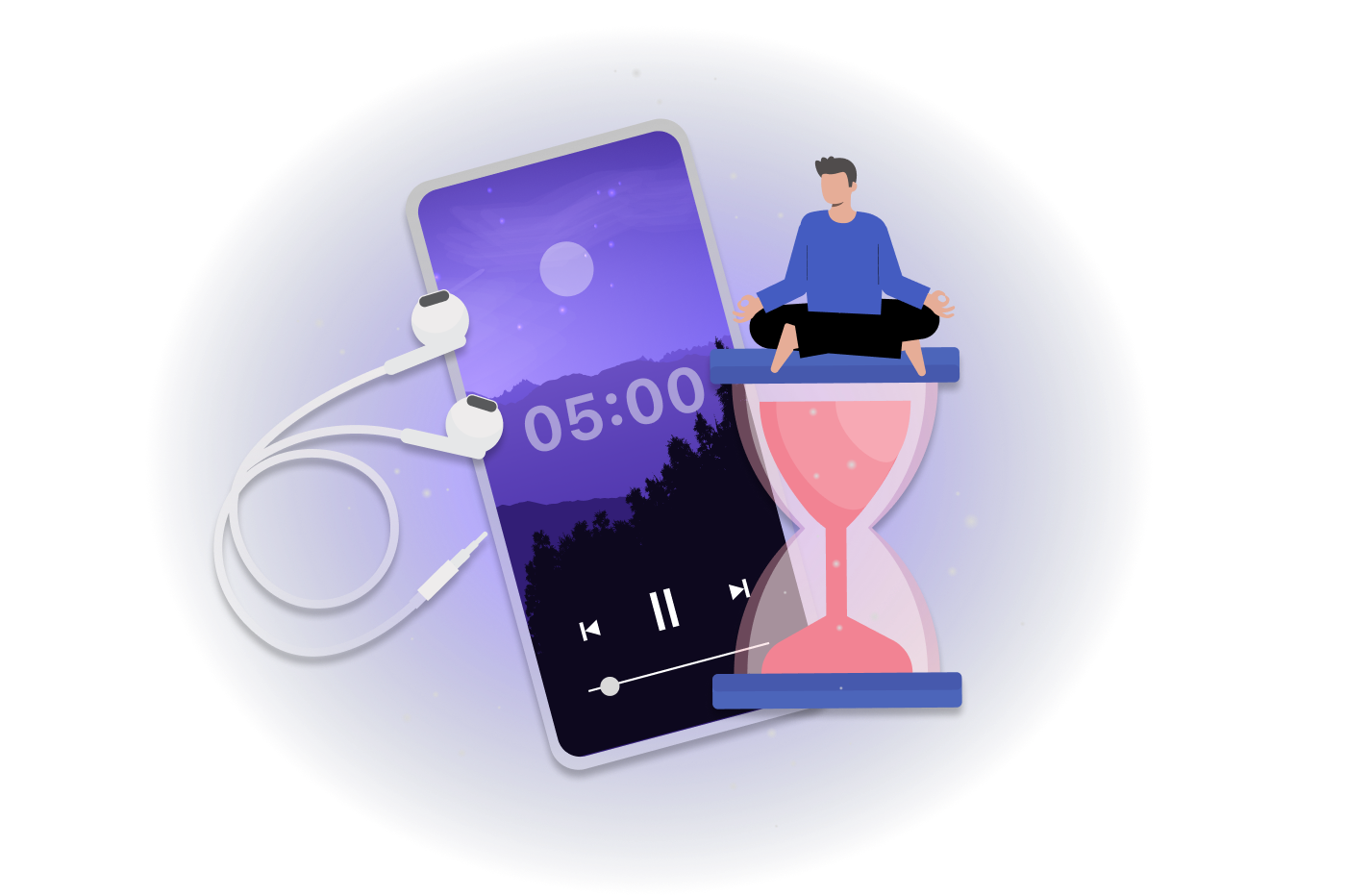
Research shows that it can also boost brain function, slow down the aging process (Anti-aging Meditation)(Anti-aging Meditation) and support a healthy metabolism.
"While overall life expectancy has been increasing, the human brain still begins deteriorating after the first two decades of life and continues degrading further with increasing age. Thus, techniques that diminish the negative impact of aging on the brain are desirable. Existing research, although scarce, suggests meditation to be an attractive candidate in the quest for an accessible and inexpensive, efficacious remedy."
So, if the lack of time is what’s stopping you from introducing meditation to your daily routine, you may now take a relieved breath, because it’s not an issue. Moreover, if setting aside a few minutes for meditation still poses a problem, you may consider walking meditation or even bath meditationbath meditation. If you’re one of the people who like to have long baths, you can use that time to benefit not only your body but also your brain with some meditation.
Walking Meditation
If for some reason you don’t enjoy sitting, can’t focus when you’re not moving, or you simply don’t have time to perform any other kind of meditation, walking meditation may be what you’re looking for. Similar to the bony scan meditation, in walking meditation, you don’t focus on your breathing. Instead, you focus on your feet, on the sensations you feel in them. Studies show that the combination of walking and meditation (both very healthy things to do) can be especially beneficial for your health. According to researchers walking meditation can:
- Strengthen your balance
- Help manage chronic illnesses, like diabetes
- Improve mental health
How to practice walking meditation? The first thing that one should note is that walking meditation isn’t just about being more mindful on your way to work. It’s a specific technique that only works if certain measures are being followed. Walking is all about getting from one point to another, but walking meditation is not. So what should you do?
Draw an imaginary line in your head. As you walk the line focus on the sensation in your feet. Lift one foot, move it forward, place it on the ground and move weight on it. Only then move another foot. Walk to the end of your imaginary line and then turn around and walk back the same line. It may be helpful to pause after turning around and before walking back.
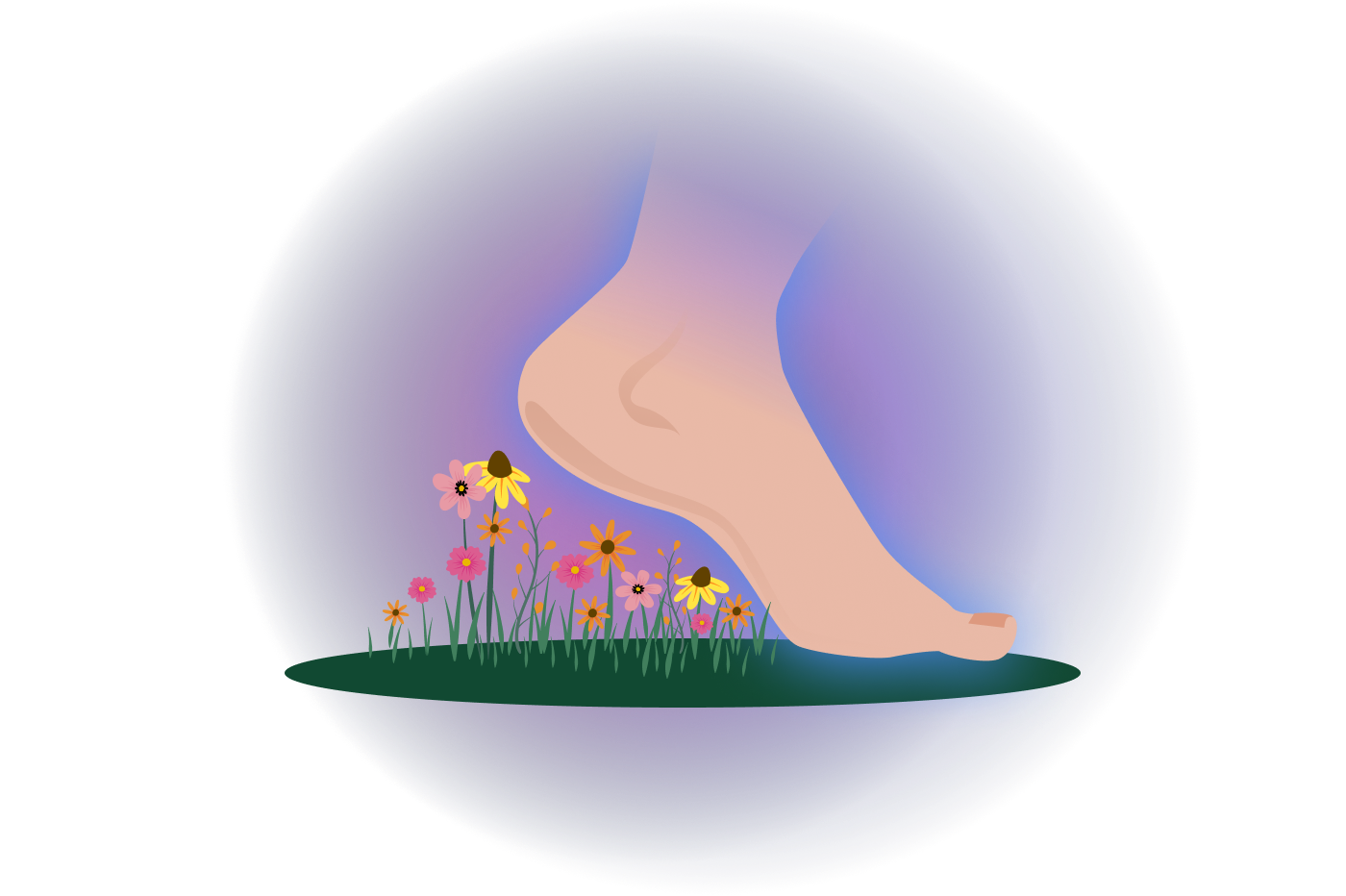
You may want to stop for a moment and breathe in and out before you start walking again. As you walk along the line, remember that it is completely normal for your mind to wander. It’s okay if it does but as soon as you notice redirect your whole attention back to the sensation in your feet.
You can find some Free Walking MeditationFree Walking Meditation in Take3Breaths. Try the short 1-minute version below:
Find your own way
Mentioned above are just a few of the techniques that you may use in order to find peace, deal with negative emotions, calm your anxious thoughts, reduce anxiety and chronic stress or even ease panic attacks. As you become more advanced in your meditation, you may want to look for more possibilities and experiment with different techniques. As you do, remember that the most important thing is for you to find something that suits you. Not each and every technique will work for everybody. For example, if you don’t enjoy sitting down without moving for prolonged periods of time, you may try Walking Meditation. If you feel like sitting in silence is too distracting for you or that you’d rather listen to some soothing music, maybe Music Meditation is what you should explore. If you don’t have much time, there’s always Brief Meditation and if you feel like trying some Mantra Meditation but don’t know where to start, you can always help yourself out with an app. Take3Breaths offers guided meditation programs for stress and anxiety, as well as breathing sessions, meditation for productivitymeditation for productivity and creativitycreativity, and even some sleeping meditation.sleeping meditation.
Updated: 14.10.2022
- +What type of meditation should I do for anxiety?Mindfulness meditation revolves around focusing on the present moment and noticing sensations without evaluating them, which is the best practice for reducing stress and anxiety. However, each type of meditation has a calming effect on your mind.
- +How long should I meditate for anxiety?As much as 10 to 15 minutes of meditation daily can be helpful. It usually takes up to 8 weeks of meditation before you see the results it has on your mind, for better results try meditating for up to 40-45 minutes.
- +Does guided meditation help with anxiety?Yes, guided meditation will help you relax, calm down and refocus your attention on something that is not stressful.
- +How long does meditation take to cure anxiety?Studies show that even as much as 13 minutes of meditation a day for 8 weeks decreases anxiety, enhances your mood, improves attention, and gives you better control over your emotional state.

 Take3Breaths
Take3Breaths

